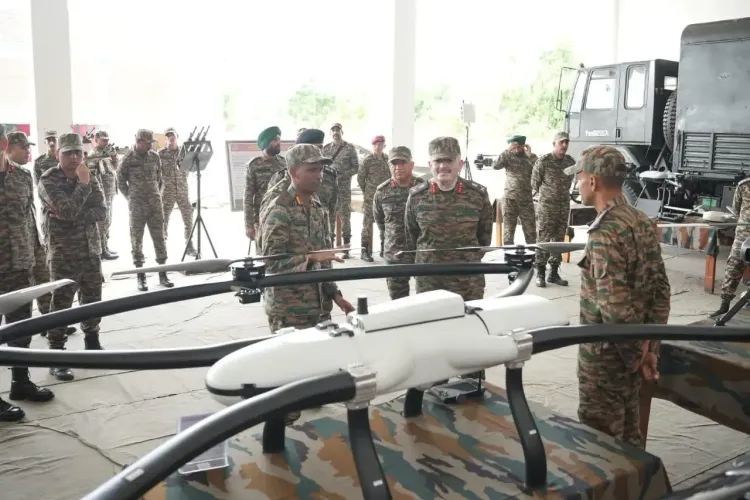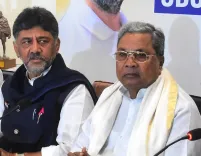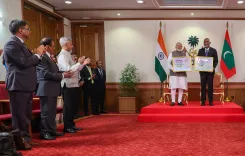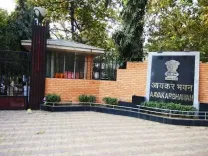How is the Indian Army Transforming Warfare with ‘Exercise Drone Prahaar’?

Synopsis
Key Takeaways
- Integration of drones into military operations is crucial for modern warfare.
- Improved situational awareness can lead to faster decision-making.
- Testing essential enablers is vital for successful drone missions in combat.
- Indian Army's commitment to technological advancement is evident through such exercises.
- Emphasizing self-reliance in defense enhances national security.
New Delhi, July 25 (NationPress) In a significant advancement towards the technological evolution of India’s military prowess, the Indian Army conducted ‘Exercise Drone Prahaar’ on Friday, showcasing a forward-thinking drill that illustrates the incorporation of unmanned aerial systems into real-time tactical operations.
Lieutenant General Abhijeet S Pendharkar, General Officer Commanding Spear Corps, closely supervised the exercise, aimed at validating the operational utility of drones in a battlefield setting.
This exercise, carried out under realistic war-like scenarios, demonstrated how drones can enhance Intelligence, Surveillance and Reconnaissance (ISR), facilitate real-time sensor-to-shooter connections, and enable precision strikes at all levels of tactical engagement.
The Indian Army exhibited the efficient deployment of drones in coordinated operations alongside infantry and other supporting units.
Focused on improving situational awareness and accelerating decision-making for tactical leaders, the drill utilized layered surveillance systems and real-time data sharing.
A key aspect of the exercise was testing essential enablers for drone warfare, including airspace deconfliction strategies, secure communication networks, and coordination protocols among various military branches. These capabilities are crucial for the effective execution of drone missions in complex combat zones.
“The exercise also assessed vital enablers for battlefield drone integration, including airspace deconfliction, secure communications, and coordination protocols across multiple arms and services,” stated a defense official.
The Army emphasized that this exercise embodies its broader vision of developing a technologically empowered force, ready to address future security challenges with agility and precision.
As India advances towards self-sufficiency in defense under the ‘Aatmanirbhar Bharat’ initiative, such drills highlight the Army’s commitment to innovation and flexibility. ‘Exercise Drone Prahaar’ exemplifies the Indian Army’s evolving warfighting doctrine, which prioritizes tech-driven superiority and battlefield dominance.
It is noteworthy that the Indian Armed Forces have increasingly focused on drone technologies in recent years, establishing a new frontier in warfare that has been emphasized by top Army officials, including CDS Anil Chauhan.
In the current conflicts in Russia-Ukraine, Israel-Palestine, and most recently during Operation Sindoor, the importance of indigenous drone technologies underscores the transformations in modern warfare, which extend beyond traditional arms and ammunition to heavily rely on drones as well.






